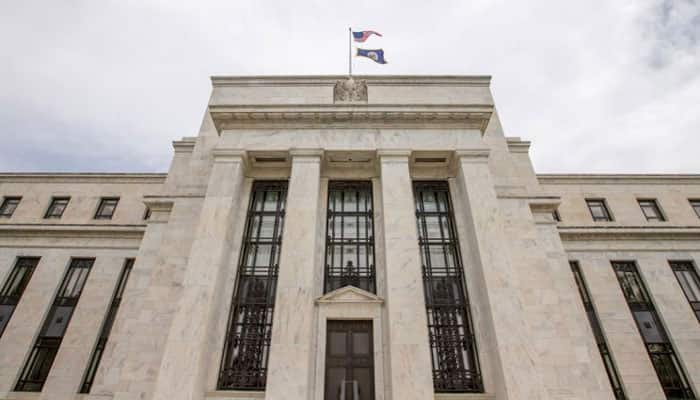Zee Media Bureau
With a potentially volatile US presidential election and two months of economic data still to come, the Fed policymakers are engrossed in a dilemma – whether to go for a rate hike or maintain status quo. As of now, they seem to be hovering anywhere in between in the confused territory.
It was in December last year that the rates were hiked for the first time in almost ten years.
Therefore, market pundits are expecting the same exercise once again this December. However, the probability levels are not as strong as then and only stand at 55 percent as per ther CME group.
Debate is Far from Over
With a potentially volatile U.S. presidential election and two months of economic data still to come, the Fed policymakers` remarks suggested the debate is far from over.
Two states eastward, in Ohio, the president of the Cleveland Fed, Loretta Mester, in contrast said it was a mistake to discard the standard practice of raising rates well before inflation rises.
"Policymakers...should not throw out all that`s been learned from past experience or be led astray by thinking this time is completely different," Mester said in her first remarks since she dissented against last week`s decision and argued for an immediate rate hike.
She warned against a too-cautious approach given the Fed`s progress on jobs and inflation.
"Status quo is always attractive. If we wait to every data point lines up, we surely will get behind the curve," Mester told reporters following her speech.
Kansas City Fed chief Esther George, who also dissented last week, offered a similar view. She told a forum for minority bankers that while she is "not interested" in braking the economy, rates should rise "slowly but surely" or the Fed could find itself later having to raise them aggressively.
Toward the middle, San Francisco Fed President John Williams said on Tuesday that it is getting harder and harder to justify low rates, and warned against getting too "greedy" on trying to push down unemployment. On Wednesday, Minneapolis Fed President Neel Kashkari said that rates could stay low for longer because there are no signs of inflationary pressures.
"The economy still has room to run before it overheats," Kashkari said.
Other regional Fed presidents and Fed Governor Jerome Powell are due to speak on Thursday.
The most influential voice, Fed Chair Janet Yellen, has kept her options open, saying she feels the case for a rate increase is strengthening, but also saying the economy still had "room to run" on job creation.
She testified before the U.S. House of Representatives Financial Services Committee on Wednesday in a hearing that dealt largely with the Fed`s regulatory role and changes it is considering to its annual stress tests for banks.
Fundamentally Sluggish
Evans` comments highlighted the Fed`s dueling visions over where the economy stands eight years into an uneven recovery.
Mester and George were among the three regional Fed presidents who dissented on last week`s rate decision, and others have cited the need for the Fed to act in time to prevent any rapid run-up in inflation.
The competing body of thought, with strong adherents within the Fed`s more influential, Washington-based board of governors, argues that the global and U.S. economies have become fundamentally sluggish in the wake of the 2007-2009 financial crisis.
Evans said weak growth, an aging workforce and poor productivity may leave the U.S. economy stuck with low interest rates for years to come, and the Fed struggling to reach its 2 percent inflation target.
As some in the financial industry press for higher rates to improve their lending margins, Evans offered a sobering counterpoint: It`s not likely to happen fast.
The steady decline in estimates of equilibrium interest rates, Evans said, means monetary policy is not as loose as many analysts estimate, there is less risk of inflation rising too fast - and less reason to move the policy rate higher.
"U.S. policy today is less expansionary than what is often calibrated from simple monetary policy rules or other historical comparisons," Evans said. "The risk of overshooting our 2 percent inflation is lower - and the likelihood that we actually get to 2 percent is smaller."
Evans told bankers they may need to plan carefully for a "new normal" of low rates, rather than hope for the return to an era when a larger gap between deposit and lending rates gave them more flexibility to compete.
To conclude, it's in the benefit of all to remain the the low interest rate environment for some time for obvious reasons. Hence, for the same logic, monetary policy is expected to change the orientation at a very slow pace.
Till then keep debating.
(With inputs from Reuters)
















